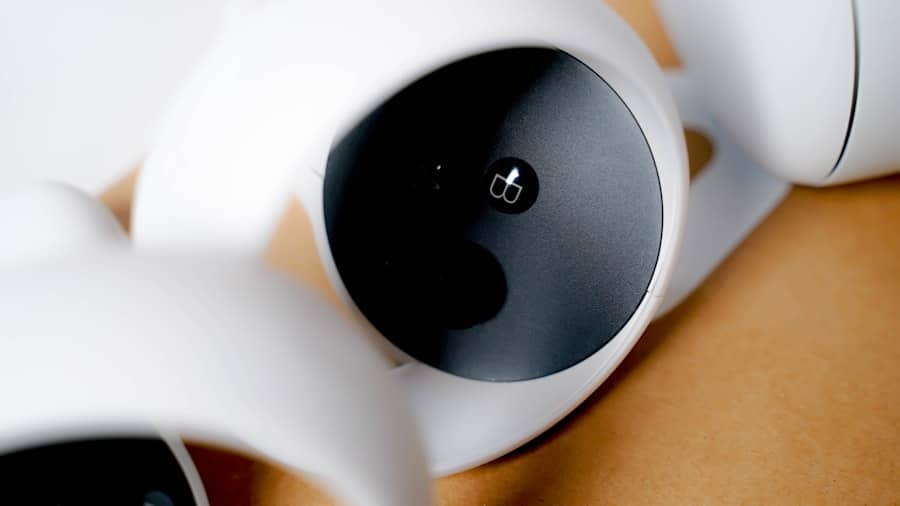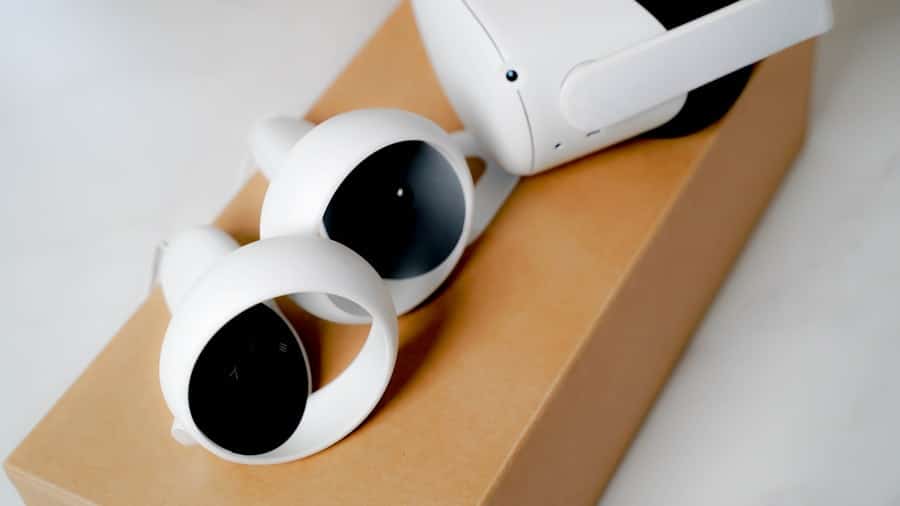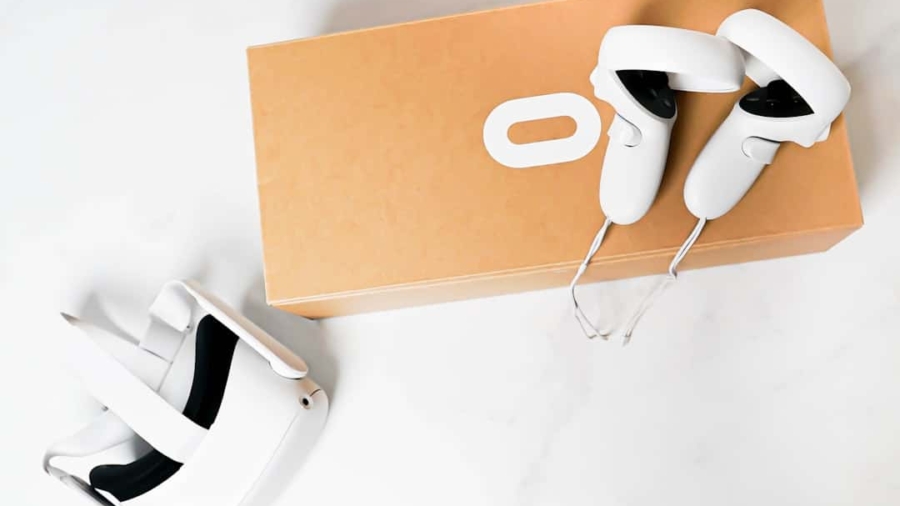Virtual reality (VR) headsets have revolutionized the way we experience digital content, offering immersive environments that transport users into entirely new worlds. Initially a concept confined to science fiction, VR technology has evolved significantly over the past few decades, becoming accessible to consumers and businesses alike. The core function of a VR headset is to create a simulated environment that can be interacted with in a seemingly real way, utilizing a combination of hardware and software to achieve this effect.
Users can engage with virtual spaces through visual, auditory, and even haptic feedback, making the experience deeply engaging and often transformative. The rise of VR headsets has been fueled by advancements in technology, including improvements in display quality, motion tracking, and processing power. As a result, VR has found applications across various sectors, from gaming and entertainment to education and training.
The ability to immerse oneself in a virtual world has opened up new avenues for storytelling, skill development, and social interaction. As the technology continues to advance, the potential for VR headsets to enhance our daily lives becomes increasingly apparent, making it an exciting time for both consumers and developers in the VR space.
Key Takeaways
- VR headsets provide an immersive experience by simulating a 3D environment
- The latest VR headset technology includes higher resolution displays and improved tracking systems
- The best VR headsets for gaming offer high refresh rates and wide field of view for an immersive gaming experience
- The best VR headsets for work offer features like hand tracking and high-resolution displays for productivity and collaboration
- Comparison of VR headsets features and specs include resolution, field of view, tracking system, and compatibility with different platforms
- VR headsets price range varies from affordable options for casual users to high-end models for professional use
- User reviews and feedback on VR headsets can help in making an informed decision before purchasing
- In conclusion, recommendations for VR headsets depend on the intended use, budget, and specific features required for the best experience
The Latest VR Headset Technology
Enhanced Visual Fidelity
One of the most significant developments is the introduction of higher resolution displays. Modern VR headsets now boast resolutions that exceed 2000 x 2000 pixels per eye, significantly reducing the “screen door effect” that plagued earlier models. This improvement allows for sharper images and more detailed environments, making virtual experiences feel more lifelike.
Smarter Tracking Technology
Another key area of innovation is in tracking technology. Many of the latest VR headsets utilize inside-out tracking systems that employ multiple cameras to monitor the user’s movements without the need for external sensors. This not only simplifies setup but also enhances freedom of movement within the virtual space.
Immersive Haptic Feedback
Furthermore, haptic feedback technology has seen significant improvements, allowing users to feel sensations that correspond with their actions in the virtual world. For instance, when interacting with objects or navigating through environments, users can experience tactile feedback that adds another layer of immersion.
The Best VR Headsets for Gaming

When it comes to gaming, several VR headsets stand out due to their performance, library of available games, and overall user experience. The Oculus Quest 2 is often hailed as one of the best options for gamers due to its versatility and affordability. It offers a standalone experience without the need for a powerful gaming PC while still providing access to a vast library of games.
With its intuitive controls and wireless capabilities, players can enjoy a wide range of titles from action-packed shooters to immersive role-playing games. Another strong contender is the Valve Index, which is known for its high-quality build and exceptional tracking capabilities. The Index features a high refresh rate of up to 144Hz and utilizes external base stations for precise tracking, making it ideal for competitive gaming.
Coupled with its finger-tracking controllers, the Valve Index allows for nuanced interactions within games, making it a favorite among serious gamers.
The Best VR Headsets for Work
In the realm of professional applications, VR headsets are increasingly being adopted for training, collaboration, and design purposes.
With a resolution of 2448 x 2448 pixels per eye and a wide field of view, it provides an exceptional visual experience that is particularly beneficial for design work and simulations.
The Vive Pro 2 also supports enterprise-level applications, making it suitable for industries such as architecture, engineering, and healthcare. Another noteworthy option is the Meta Quest Pro, which is designed specifically for business use. It features advanced mixed reality capabilities that allow users to blend virtual elements with their physical environment.
This is particularly useful for collaborative work where teams can interact with 3D models or presentations in real-time. The Quest Pro’s ergonomic design ensures comfort during long working hours, while its wireless functionality allows for flexibility in various work settings.
Comparison of VR Headsets Features and Specs
When comparing VR headsets, several key features and specifications should be considered to determine which model best suits individual needs. Display resolution is paramount; higher resolutions lead to clearer images and reduced eye strain during extended use. For instance, while the Oculus Quest 2 offers a resolution of 1832 x 1920 per eye, the Valve Index provides a superior experience with its 1440 x 1600 per eye resolution.
Tracking technology is another critical factor; inside-out tracking systems like those found in the Oculus Quest series offer convenience and ease of setup but may not match the precision of outside-in systems used by the Valve Index or HTC Vive Pro 2. Additionally, field of view (FOV) plays a significant role in immersion; headsets like the Valve Index boast an FOV of approximately 130 degrees compared to the Quest 2’s 90 degrees. Comfort and ergonomics are also essential considerations, especially for users who plan on using their headsets for extended periods.
Weight distribution, padding materials, and adjustability can greatly affect user experience. For example, the HTC Vive Pro 2 features a comfortable design with adjustable straps that help distribute weight evenly across the head.
VR Headsets Price Range and Affordability

The price range for VR headsets varies widely based on features, specifications, and intended use cases. Entry-level options like the Oculus Quest 2 are priced around $299, making them accessible for casual gamers and newcomers to VR. This affordability has contributed significantly to its popularity and widespread adoption among consumers looking to explore virtual reality without a hefty investment.
On the higher end of the spectrum, premium models such as the Valve Index can cost upwards of $999 when considering all necessary components like base stations and controllers. While this price point may deter some users, it reflects the advanced technology and superior performance offered by these devices. Businesses looking to invest in VR for training or collaboration may find that the initial cost is justified by the potential return on investment through enhanced productivity and training outcomes.
User Reviews and Feedback on VR Headsets
User reviews provide valuable insights into the real-world performance of VR headsets beyond technical specifications. Many users praise the Oculus Quest 2 for its ease of use and extensive game library. Reviewers often highlight its wireless capabilities as a significant advantage over tethered systems, allowing for greater freedom of movement during gameplay.
However, some users have noted that while the headset is comfortable for short sessions, prolonged use can lead to discomfort due to its weight. In contrast, the Valve Index receives accolades for its build quality and immersive experience but is often critiqued for its high price point and complex setup process. Users appreciate the precision tracking and high refresh rates but mention that it requires a powerful gaming PC to fully utilize its capabilities.
Feedback on professional headsets like the HTC Vive Pro 2 indicates that while they excel in visual fidelity and tracking accuracy, they may not be as user-friendly as consumer-focused models.
Conclusion and Recommendations for VR Headsets
As virtual reality continues to evolve, selecting the right headset depends on individual needs and preferences. For casual gamers or those new to VR, options like the Oculus Quest 2 offer an excellent balance of performance and affordability without requiring additional hardware investments. On the other hand, serious gamers seeking high-end performance may gravitate towards models like the Valve Index or HTC Vive Pro 2 for their superior tracking capabilities and immersive experiences.
For professional applications, investing in headsets designed specifically for work—such as the Meta Quest Pro or HTC Vive Pro 2—can enhance productivity and collaboration in various fields. Ultimately, understanding personal requirements—whether they be gaming or professional use—will guide consumers toward making informed decisions in this rapidly advancing technological landscape.
If you are interested in exploring cutting-edge technology for work and gaming, you may also want to check out the features of the Samsung Notebook 9 Pro. This article provides an in-depth look at the capabilities of this versatile device, which could complement your VR headset experience. Additionally, if you are looking to enhance your gaming experience on the go, you may find the article on how to choose a smartphone for games helpful. And if you are considering investing in a smartwatch to complement your tech setup, you may want to compare the features of the Apple Watch and Samsung Galaxy Watch in this informative article. Source
FAQs
What are VR headsets?
VR headsets are wearable devices that allow users to experience virtual reality by placing a screen in front of their eyes and tracking their head movements to create an immersive, 3D environment.
How do VR headsets work for gaming?
VR headsets for gaming work by displaying a 3D environment in front of the user’s eyes, allowing them to feel like they are inside the game. The headsets track the user’s head movements to adjust the view in real-time, creating a more immersive gaming experience.
How do VR headsets work for work purposes?
VR headsets for work purposes can be used for virtual meetings, training simulations, and remote collaboration. They allow users to feel like they are in the same physical space as their colleagues, even if they are miles apart.
What are some of the best VR headsets for gaming and work in 2025?
Some of the best VR headsets for gaming and work in 2025 include the Oculus Quest 3, HTC Vive Pro 2, and the Sony PlayStation VR2. These headsets offer high-resolution displays, advanced tracking technology, and comfortable designs for extended use.
What are the key features to look for in a VR headset for gaming and work?
When choosing a VR headset for gaming and work, it’s important to consider factors such as display resolution, field of view, tracking accuracy, comfort, and compatibility with the user’s gaming or work setup. Additionally, features like wireless connectivity and hand tracking can enhance the overall experience.

